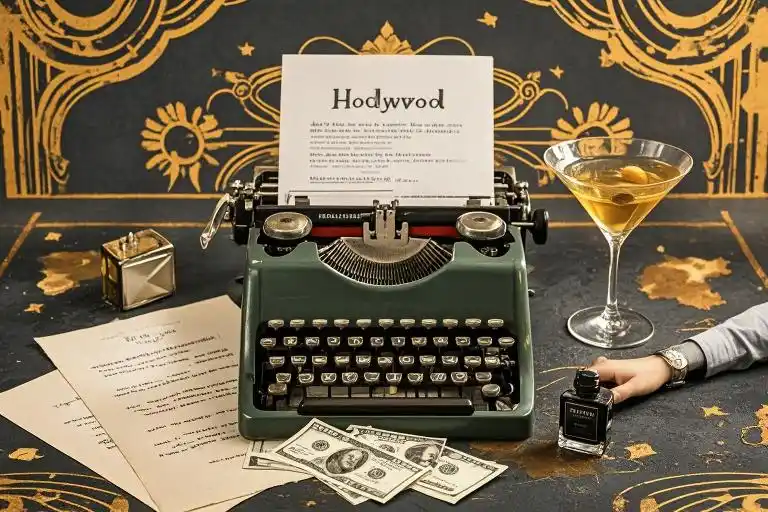Let’s start with a question that’d make Zelda Fitzgerald swirl her champagne flute: What if your grocery bill determined your literary legacy?
Picture this—it’s 1919 St. Paul, Minnesota. A 23-year-old F. Scott Fitzgerald stares at his $879 annual earnings ($15,000 today), barely covering Zelda’s mint juleps and silk stockings. The future author of The Great Gatsby hadn’t yet learned that genius alone won’t fill your icebox. But here’s the twist: within 12 months, he’d catapult into America’s top 2% earners. How? Let’s unpack the messy, glittering blueprint.
The $879 Wake-Up Call
Modern writers grumbling about algorithm changes? Meet Scott’s version: rejection letters piling up faster than Zelda’s department store tabs. His pre-fame short stories paid $30 apiece—enough for a fancy dinner, not a life. (Fun fact: That $879 income meant he legally didn’t need to file taxes, a loophole my accountant still envies.)
But here’s where Fitzgerald outmaneuvered his peers. While others clung to pure artistry, he treated stories like multipliers. A single tale sold to The Saturday Evening Post ($400) could become a movie option ($1,800), then morph into chapter fodder for novels. Zelda’s infamous shopping sprees? They weren’t just indulgence—they forced Scott to monetize faster.
1920: The Year Writing Became a Gold Mine
Cue the jazz trumpets. In one dizzying year, Scott:
- Sold 11 stories to magazines ($3,975)
- Licensed 4 tales to Hollywood ($7,425)
- Raked in This Side of Paradise royalties ($6,200)
Total: $17,600 ($300,000+ today). Not bad for someone who’d recently pawned his watch!
His secret sauce? Dual streams. Magazine checks funded his novels; book buzz inflated his story rates. When Paradise became the ultimate flapper bible, Scott became a brand—a lesson for today’s Substackers building audiences before launching courses.
Hollywood’s Harsh Spotlight (And Why Hemingway Hated It)
Fast-forward to 1937. Scott’s now a MGM screenwriter earning $1,000/week—over $20,000 today! But listen closely, and you’ll hear Hemingway sneering from Key West. The divide? Scott saw writing as both art and commerce; Papa deemed “studio money” vulgar.
Yet here’s the irony: Scott’s hackwork (yes, he ghostwrote cheesy dialogues) funded his literary experiments. That $24,000 annual average? It bought him time to craft Gatsby’s lyrical genius between script deadlines—proof that sometimes, you can have both caviar and creativity.
Your Turn: The Fitzgerald Formula for 2024
Let’s translate Scott’s hustle:
- Package ideas like film producers—turn blog posts into podcast scripts, Twitter threads into e-books
- Chase cultural waves—he wrote flapper stories during the flapper craze; today’s creators ride AI/VR trends
- Let desperation fuel innovation (Zelda’s spending habits make great motivation!)
A quick reality check: Scott died believing himself a failure. But here’s the kicker—his 2022 royalties topped $500,000. Stories outlive us.
So next time you stress over rent versus creative integrity, remember: Fitzgerald’s typewriter both fed his family and birthed American literature’s finest prose. Your laptop can do both too—with the right strategy and a dash of Zelda-worthy audacity.
Pro Tip: Calculate your “Fitzgerald Ratio”—what percentage of your writing time generates immediate income vs. long-term value? Aim for 60/40. After all, even genius needs groceries.


